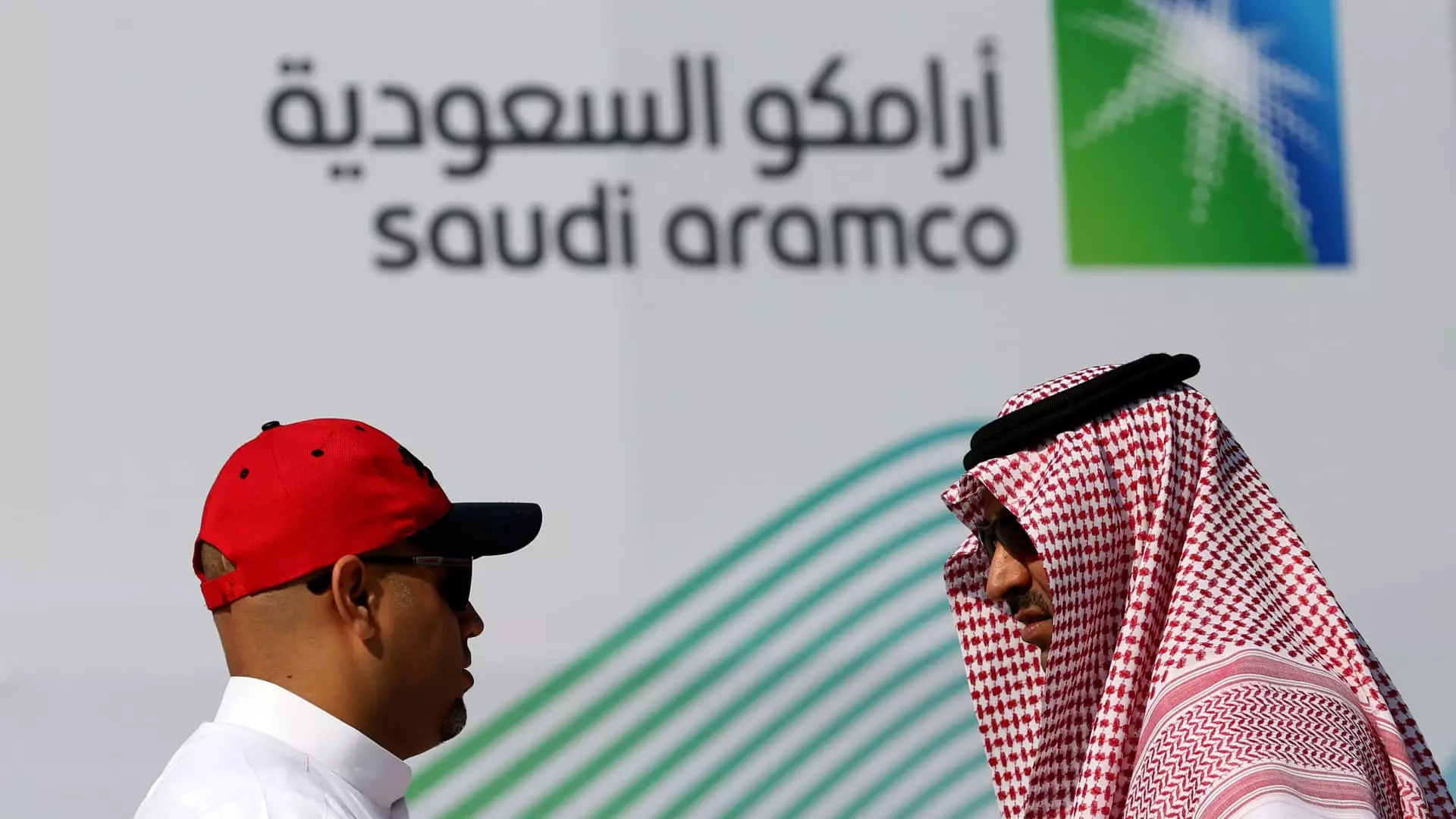The latest earnings report from Saudi Aramco reveals an unsettling truth: the world’s most profitable oil company is grappling with significant financial pressures. The decline in net profit of 5% from the previous year, totaling $26 billion, highlights a troubling trend in the oil market as lower prices and production levels continue to plague the company. Even though this figure slightly exceeded analysts’ expectations of $25.3 billion, it remains a stark reminder of the relentless challenges facing the global oil sector.
With free cash flow dropping to $19.2 billion from the prior year’s $22.8 billion, the financial strain is palpable. Furthermore, cash flow from operating activities also took a hit, descending from $33.6 billion to $31.7 billion year-on-year. These figures not only indicate a deteriorating financial landscape for Aramco but suggest a broader malaise affecting the oil industry at large, revealing the risks inherent in reliance on volatile commodity prices.
The Dividend Dilemma: An Alarming Cutback
Perhaps the most alarming development in this earnings report is Aramco’s drastic reduction in its performance-linked dividend payouts. Slashing the metric from a whopping $10.2 billion in the last quarter to just $200 million is not simply an operational adjustment; it is a warning signal about the company’s long-term viability and the health of the Saudi economy. Such a drastic measure not only limits the flow of revenue to the Saudi government but also raises questions about the sustainability of the government’s ambitious megaprojects, which are largely funded by oil revenues.
The overall dividend dropped from $31 billion to $21.36 billion, revealing the interconnectedness of Aramco’s financial health with the economic stability of Saudi Arabia. This precarious position for both the government and Aramco illustrates the increasing volatility of oil revenues in a fluctuating global market. Such cuts are not merely superficial adjustments; they represent the stark reality of a country that depends heavily on oil exports, with fewer resources available to support an economy that is attempting to diversify.
Evolving Markets and the Quest for Stability
The uncertain dynamics of the global oil market are not just a concern for Aramco but resonate across various sectors vital to the Saudi economy. The CEO, Amin Nasser, tried to reassure stakeholders by emphasizing the company’s “unique scale” and its capacity for reliable low-cost operations. Still, investors must question the effectiveness of such assurances in the face of dwindling profits. The broader implications of fluctuating oil prices are troubling; as companies like Aramco navigate economic headwinds, the country faces mounting pressure, particularly as OPEC+ cuts continue to be adjusted in response to weak global demand.
While the company maintains a long-term perspective, the immediate financial landscape raises serious concerns about adaptability. The recent decision to accelerate production increases — amidst falling prices and trade complications — appears to be a desperate gamble rather than a calculated strategic pivot. This shift signals an intention to evade the adverse effects of reduced prices but simultaneously risks flooding the market and exacerbating the already complex situation.
Fiscal Reality: A Looming Budget Catastrophe
Economic forecasts from institutions like Goldman Sachs predict dire consequences for the Saudi budget, estimating potential deficits soaring between $70 billion and $75 billion should oil prices stabilize around $62 per barrel. This is alarming news, especially for a country that relies heavily on oil has a precarious fiscal structure built around high oil revenues. A significant budget deficit not only threatens public services and social programs but also necessitates borrowing, further straining the economy.
The brandishing of debt reflects an inability to sustainably manage resources in an era of lower oil prices. The anticipated rise in borrowing could plunge Saudi Arabia into situations where asset sales become necessary, a tactic that risks compromising national assets and long-term economic stability. As Goldman Sachs’ economist Farouk Soussa pointed out, such fiscal measures may lead to more severe public expenditure cutbacks, fundamentally destabilizing the very projects that the kingdom has identified as crucial for its Vision 2030 ambitions.
While Saudi Aramco projects resilience, the underlying financial realities tell a different story — one that carries implications not merely for the oil giant but for the entire Saudi economy, fundamentally questioning the viability of an oil-dependent future amidst global shifts toward renewable energy and changing market dynamics. The time for genuine reform appears pronounced, yet the paths taken thus far reveal a cautious and often reactive approach rather than proactive leadership.

